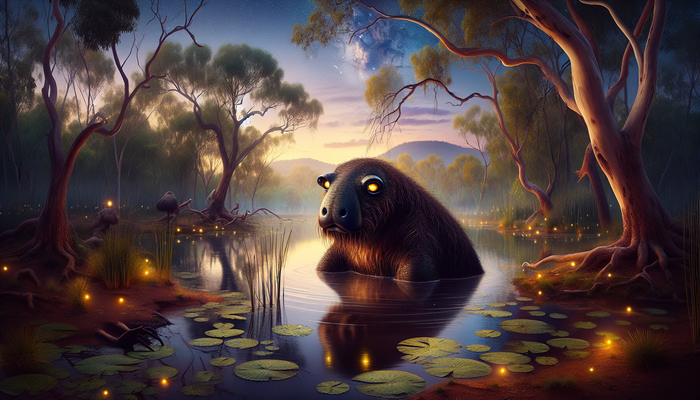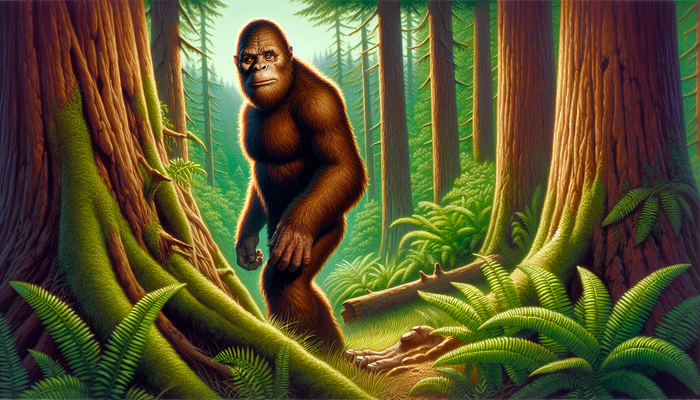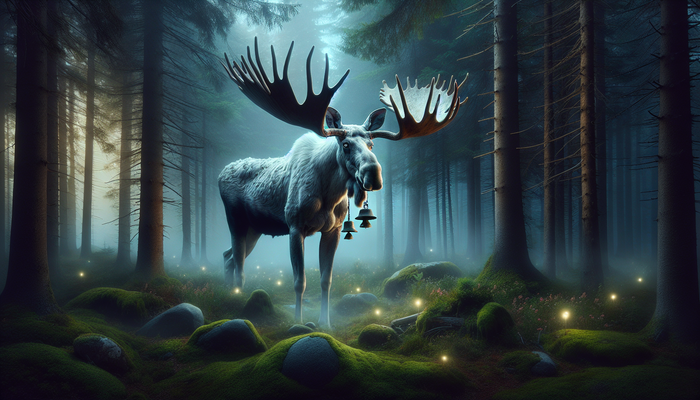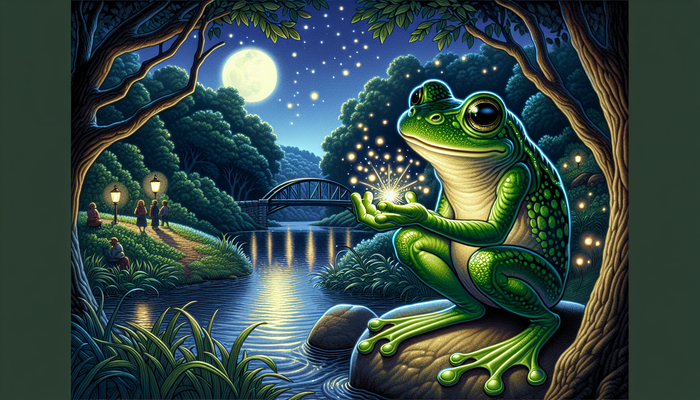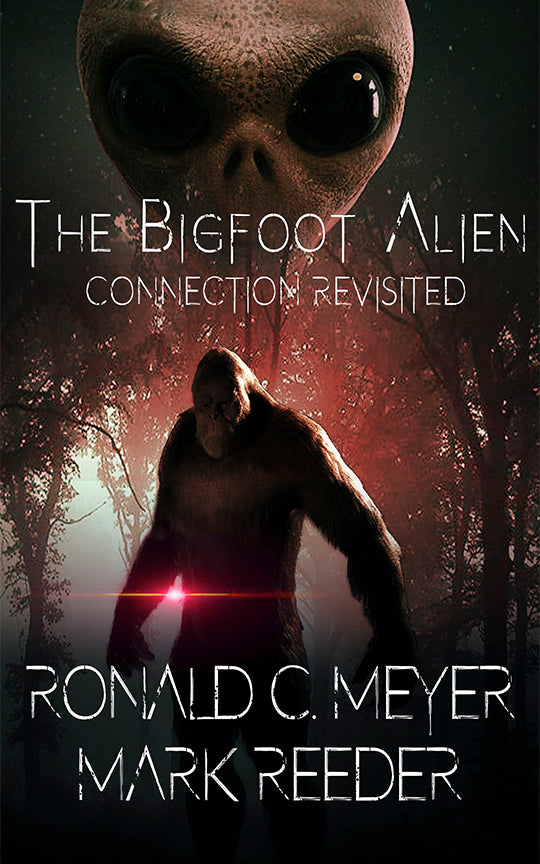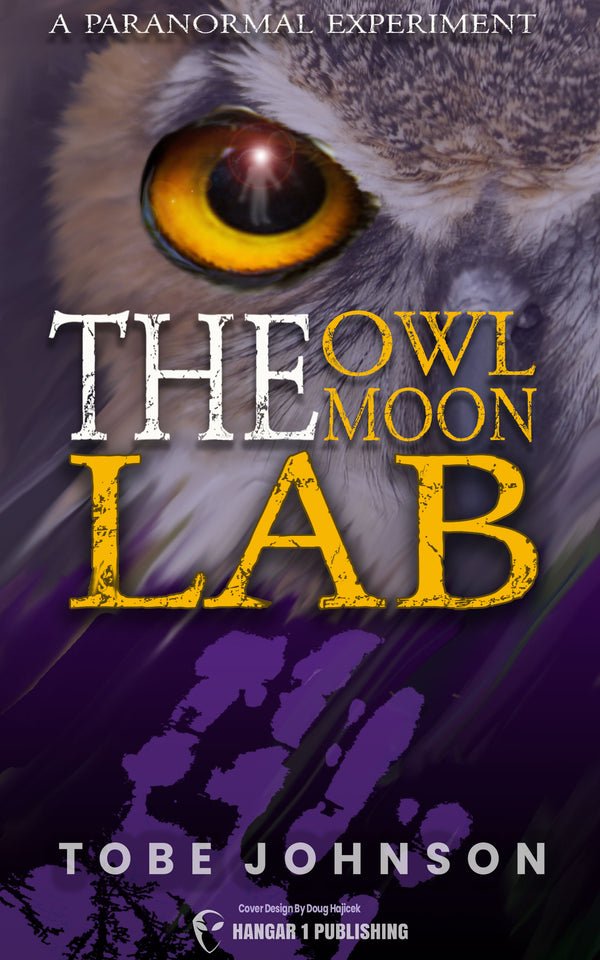Massachusetts Bigfoot: A Centuries-Old Legend Endures
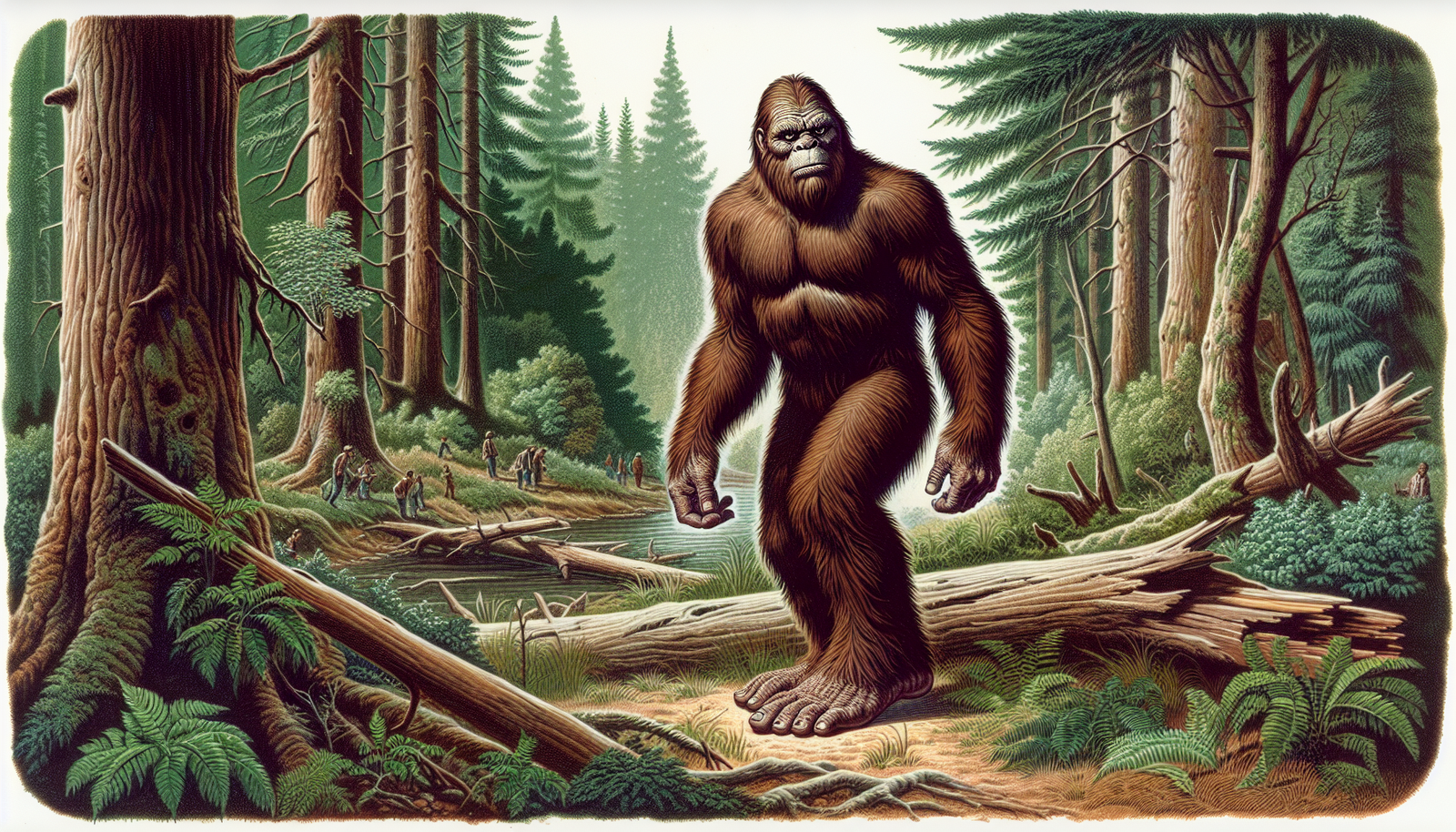
By Ava Martinez, Cryptozoologist
In the realm of cryptozoology, few creatures have captured the human imagination as profoundly and persistently as Bigfoot. This elusive, humanoid beast, said to roam the wilderness of North America, has been the subject of countless stories, investigations, and debates. But while many associate Bigfoot with the dense forests of the Pacific Northwest, the creature's legacy stretches far beyond those misty mountains. In fact, one of the most intriguing and enduring chapters in the Bigfoot saga unfolds in the unlikely setting of Massachusetts, a state more often associated with colonial history and academic prestige than with hairy, bipedal monsters.
For centuries, the Bay State has been a hotbed of Bigfoot activity, with a rich tapestry of sightings, encounters, and mysteries that have captivated researchers and enthusiasts alike. From the earliest historical accounts of the "Barrington Beast" in the 1700s to the modern-day enigma of the Leominster State Forest's "Monsterland," Massachusetts has consistently found itself at the center of the Bigfoot phenomenon. The evidence, though often elusive and controversial, is compelling, and the theories that have emerged are as intriguing as they are varied.
In this deep dive into the world of Massachusetts Bigfoot, we will explore the many facets of this enduring legend, tracing its roots back through history, examining the most notable sightings and encounters, and delving into the various hypotheses that attempt to explain the creature's existence. Along the way, we will meet the dedicated researchers and eyewitnesses who have devoted their lives to unraveling these mysteries, and we will grapple with the profound implications that the reality of Bigfoot would hold for our understanding of the natural world and our place within it. So join me on this journey into the heart of one of America's most fascinating and persistent legends, as we attempt to shed light on the enigma that is Massachusetts Bigfoot.
The Early Years: Historical Bigfoot Sightings in Massachusetts
The story of Bigfoot in Massachusetts does not begin with modern sightings or contemporary research, but rather stretches back centuries, to a time when the region was still a colonial outpost on the edge of an untamed wilderness. It is in these early accounts that we find the roots of the legend, the first tantalizing hints of a creature that would come to captivate the imaginations of generations.
Perhaps the most famous of these historical encounters is the case of the "Barrington Beast," a story that dates back to 1765. According to contemporary accounts, a group of explorers in the Great Barrington area stumbled upon a large, bear-like creature with a distinctly gorilla-like face. Intrigued and perhaps a bit frightened, the explorers managed to capture the beast and transport it to Cambridge, where it was subjected to study and examination. However, the creature proved to be as elusive as it was enigmatic, and somehow managed to escape, fleeing back into the wilderness from whence it came.
The Barrington Beast incident is significant not only because it represents one of the earliest documented Bigfoot sightings in Massachusetts, but also because it establishes a pattern that would come to define many subsequent encounters. The creature is described as a strange hybrid of bear and gorilla, a description that would be echoed in countless later reports. The fact that it was captured and studied, only to escape, also speaks to the enduring mystery surrounding these creatures, and the difficulty in obtaining definitive proof of their existence.
As the 19th century dawned, reports of strange, hairy, humanoid creatures continued to surface in Massachusetts. In the late 1800s, the town of North Adams was gripped by a series of sightings of a "Wild Man" that was said to leap fences and terrorize local farmers. Newspapers of the era, including the esteemed New York Times, reported on hunters' encounters with a red-furred, upright-walking creature in the nearby Williamstown mountains. These accounts, though often dismissed as folklore or exaggeration, nonetheless contribute to the growing body of evidence suggesting that something strange and unknown was lurking in the forests of the Bay State.
While it is easy to dismiss these historical accounts as mere legends or tall tales, it is important to consider them in the context of their time. In an era when much of Massachusetts was still a rugged, unexplored wilderness, encounters with unknown creatures were not uncommon. Moreover, the consistency in the descriptions of these creatures, despite the passage of time and the geographic distance between sightings, lends credence to the idea that there may be some truth behind the legends.
Of course, historical accounts alone do not prove the existence of Bigfoot in Massachusetts. The lack of physical evidence and the inherent unreliability of eyewitness testimony from a time before modern record-keeping and investigative techniques make it difficult to draw definitive conclusions. However, what these early encounters do provide is a foundation for the Bigfoot legend in the state, a starting point from which subsequent sightings and investigations would grow. They establish Massachusetts as a place with a rich history of Bigfoot activity, and set the stage for the more recent and well-documented encounters that would follow.
In the end, the historical Bigfoot sightings in Massachusetts serve as a reminder that the legend of this elusive creature is not a modern invention, but rather a mystery that has deep roots in the state's past. They are the first threads in a tapestry that would be woven over centuries, a story that continues to unfold and captivate to this day. As we move forward in our exploration of Massachusetts Bigfoot, these early accounts provide a crucial context and a sense of the enduring nature of this enigma.
Monsterland: The Leominster State Forest Enigma
In the heart of Massachusetts, nestled among the rolling hills and dense forests of the central part of the state, lies a place that has become synonymous with strange and unexplained phenomena. The Leominster State Forest, a vast expanse of over 4,300 acres, has long been a hotspot for Bigfoot sightings and other paranormal activity, earning it the ominous nickname "Monsterland" among locals and researchers alike.
At the center of the Monsterland enigma is Ronny LeBlanc, a Leominster native who has dedicated much of his life to investigating and documenting the strange occurrences in his backyard. LeBlanc's personal experiences with the unexplained began at a young age, when he had a chilling encounter with an unseen, large creature while walking a trail behind his elementary school. He recounts hearing a loud crashing sound, as if something massive was moving through the trees, but was unable to catch a glimpse of the source of the disturbance.
This early brush with the unknown sparked a lifelong fascination for LeBlanc, who has since become one of the foremost experts on the Bigfoot phenomenon in Massachusetts. His research has uncovered a wealth of compelling evidence and eyewitness accounts that suggest the Leominster State Forest is indeed a hotbed of Bigfoot activity.
One of the most significant pieces of evidence to emerge from Monsterland is a series of large, humanoid footprints discovered in 2010. These prints, which measured a staggering 28 inches in length and 14 inches in width, were found by a couple hiking in the forest and later cast by LeBlanc and his team. The sheer size and distinctly human-like shape of the prints have led many to believe they could only have been made by a creature like Bigfoot.
But the footprints are just one piece of the puzzle in Monsterland. LeBlanc and other researchers have documented numerous eyewitness accounts of Bigfoot sightings in the area, with descriptions of the creature ranging from a large, hairy, bipedal humanoid to a more ethereal, almost ghostly figure that seems to appear and vanish at will. These varied descriptions have led some to speculate that the Bigfoot of Monsterland may not be a purely physical creature, but rather an interdimensional or paranormal entity.
This theory gains further traction when one considers the other strange phenomena reported in the Leominster State Forest. In addition to Bigfoot sightings, the area has been a hotspot for UFO activity, with numerous reports of glowing orbs and unidentified flying objects in the skies above the forest. Some researchers, including LeBlanc, have suggested that there may be a connection between these UFO sightings and the Bigfoot encounters, with the creature possibly serving as a sort of intermediary or conduit between our world and others.
The idea of Bigfoot as an interdimensional being is not unique to Monsterland, but it does seem to find particularly fertile ground in the Leominster State Forest. The dense, sprawling wilderness, combined with the area's long history of strange occurrences, creates an atmosphere that is ripe for the unexplained. It is as if the forest itself is a liminal space, a thin place where the boundaries between worlds blur and the impossible becomes possible.
Of course, the theory of Bigfoot as a paranormal entity is not without its detractors. Many researchers maintain that, if Bigfoot exists, it is likely a flesh-and-blood creature, an undiscovered species of primate that has managed to evade definitive documentation. They point to the physical evidence, like the footprints found in Monsterland, as proof that Bigfoot is a tangible, biological being.
Regardless of one's personal beliefs about the nature of Bigfoot, there is no denying that the Leominster State Forest has become a focal point for the ongoing search for answers. LeBlanc and his fellow researchers continue to investigate the area, documenting new sightings and encounters, and working to unravel the mystery that has come to define this patch of Massachusetts wilderness.
In many ways, Monsterland encapsulates the larger Bigfoot phenomenon in microcosm. It is a place where the lines between reality and legend blur, where the tangible and the ethereal intersect. It is a reminder that, despite our advanced technology and scientific understanding, there are still vast realms of the unknown that lie just beyond the edges of our perception.
As we continue our journey into the world of Massachusetts Bigfoot, the enigma of Monsterland serves as a powerful example of the enduring mystery and allure of this creature. Whether Bigfoot is a physical animal or a paranormal entity, whether it resides in the forests of Leominster or in the realm of interdimensional space, one thing is certain: the search for answers will continue, driven by the unquenchable human thirst for knowledge and the tantalizing promise of the unknown.
The Bridgewater Triangle: A Paranormal Hotspot
While the Leominster State Forest may be the epicenter of Bigfoot activity in Massachusetts, it is far from the only location in the state with a reputation for the strange and unexplained. In the southeastern part of the Bay State, a 200-square-mile area known as the "Bridgewater Triangle" has long been a hotspot for paranormal phenomena, including numerous Bigfoot sightings.
The Bridgewater Triangle encompasses the towns of Abington, Freetown, and Rehoboth, and has a history of bizarre occurrences dating back centuries. The area's reputation for the unexplained is so notorious that it has drawn comparisons to the infamous Bermuda Triangle, with some even suggesting that the two may be connected by some sort of paranormal "vortex."
One of the most prominent features of the Bridgewater Triangle's paranormal landscape is the prevalence of Bigfoot sightings. Throughout the 1970s, there were numerous reports of large, hairy, humanoid creatures roaming the woods and swamps of the area. In one particularly notable case, police officers from the towns of Bridgewater, West Bridgewater, and East Bridgewater all reported seeing a "man-beast" or "anthropoid" creature, prompting a joint manhunt that ultimately proved fruitless.
More recently, in 2009, a young couple driving through the town of Freetown, one of the points of the Bridgewater Triangle, reported seeing a "large brown hair-covered 'man'" standing up from a crouched position on the side of the highway. The couple was so shaken by the encounter that they called 911, prompting state troopers to search the area, but no trace of the creature was found.
These Bigfoot sightings, while certainly compelling, are just one piece of the larger paranormal puzzle in the Bridgewater Triangle. The area is also known for its high frequency of UFO sightings, with reports of strange lights and unidentified flying objects dating back decades. Some researchers have even suggested that the Bigfoot encounters and UFO activity may be connected, with the creatures possibly serving as some sort of biological "scout" for extraterrestrial visitors.
Another prominent feature of the Bridgewater Triangle's paranormal landscape is the prevalence of Thunderbird sightings. These massive, prehistoric-looking birds have been reported in the area for centuries, with some accounts describing creatures with wingspans of up to 12 feet. One of the most famous Thunderbird sightings in the Bridgewater Triangle occurred in 1971, when a police officer named Thomas Downy reported seeing a massive, bird-like creature standing over six feet tall with a wingspan of 8 to 12 feet.
The Thunderbird sightings in the Bridgewater Triangle are particularly interesting because of their connection to Native American folklore. Many indigenous tribes in the area have long-standing traditions about giant, supernatural birds, and some researchers have suggested that the Thunderbird may be a real creature that has managed to survive in the remote swamps and forests of southeastern Massachusetts.
In addition to Bigfoot, UFOs, and Thunderbirds, the Bridgewater Triangle is also home to a host of other paranormal phenomena. The area has a long history of ghost sightings and haunted locations, with many local residents reporting encounters with spectral figures and unexplained apparitions. There have also been numerous reports of strange, humanoid creatures that don't fit the typical Bigfoot mold, including the so-called "Pukwudgies," small, troll-like beings from Algonquian folklore that are said to inhabit the swamps and forests of the region.
Perhaps most disturbingly, the Bridgewater Triangle has also been the site of alleged cult activity and animal mutilations. In the Freetown-Fall River State Forest, which lies at the heart of the Triangle, there have been numerous reports of strange rituals, sacrifices, and even human remains being discovered. These dark and disturbing incidents have led some to speculate that the area's paranormal activity may be connected to some sort of sinister, supernatural force.
The historical context of the Bridgewater Triangle may also play a role in its reputation as a paranormal hotspot. The area was the site of King Philip's War in the 17th century, a brutal conflict between Native American tribes and English colonists that resulted in widespread death and destruction. Some researchers have suggested that the lingering trauma and negative energy from this dark chapter in history may contribute to the area's high frequency of unexplained phenomena.
Regardless of the underlying causes, there is no denying that the Bridgewater Triangle is a truly unique and fascinating location. The sheer variety and intensity of paranormal activity reported in the area is staggering, and the fact that much of it remains unexplained only adds to the allure and mystery.
For Bigfoot researchers, the Bridgewater Triangle represents a tantalizing piece of the larger puzzle. The high frequency of sightings in the area, combined with the other strange and unexplained phenomena, suggests that there may be some sort of connection or underlying pattern to the creature's appearances. Whether Bigfoot is a flesh-and-blood animal, an interdimensional being, or something else entirely, the Bridgewater Triangle provides a wealth of evidence and avenues for further investigation.
From Bigfoot to UFOs: Hangar 1 Publishing Has You Covered!
Explore Untold Stories: Venture into the world of UFOs, cryptids, Bigfoot, and beyond. Every story is a journey into the extraordinary.
Immersive Book Technology: Experience real videos, sights, and sounds within our books. Its not just reading; its an adventure.


